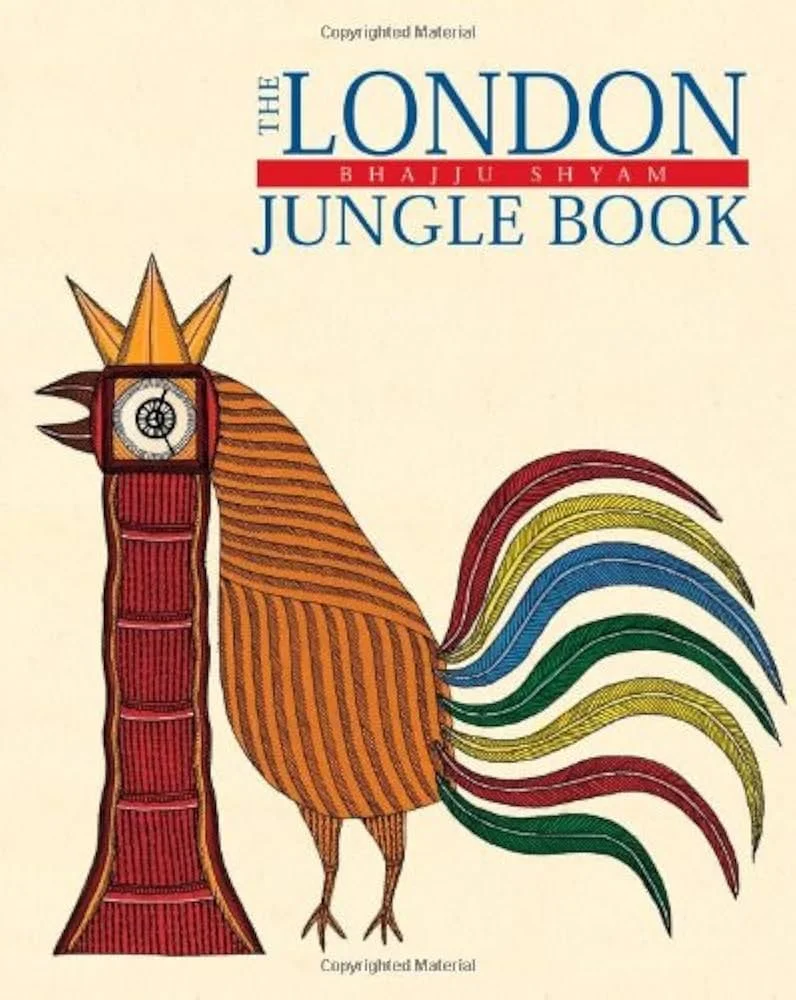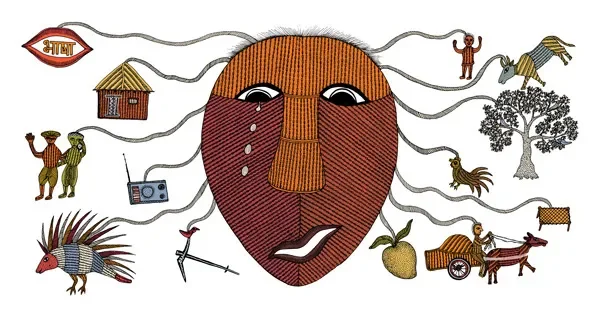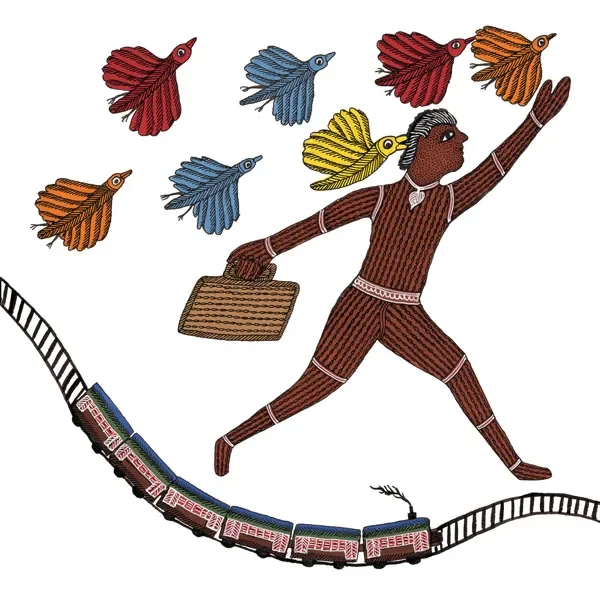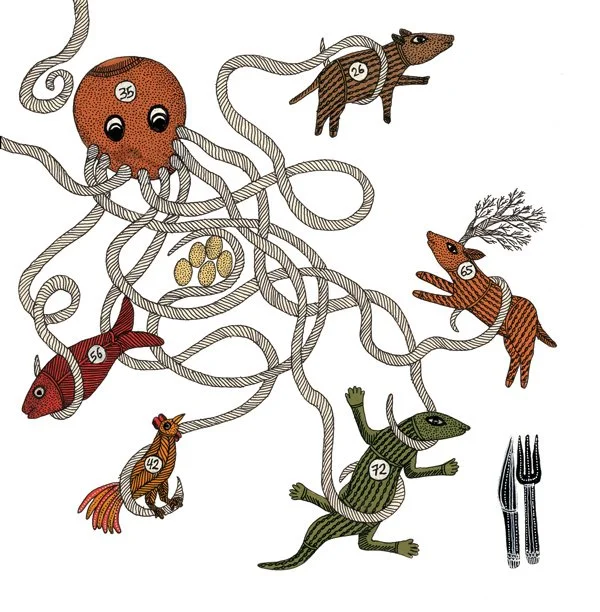
The London Jungle Book
By Bhajju Shyam
-
Indian artist
-
First published in 2004 by Tara Publishing
-
8+
The London Jungle Book is a collection of art, memories, impressions and words. A lot of people come to London every year and all of them see it through their own culture because we love comparing the unknown with something close to our heart. Reading this book is like talking to a very curious observer. He starts his journey explaining how he was invited to do some work in a restaurant in London, then he talks step by step about applying for the visa and the travel itself. He doesn’t go through every minute detail. It’s more about how he felt at the time and not the technicalities.
Before we started reading the book, I asked the children if they ever travel to a country they absolutely have no knowledge about. They vaguely remember travelling abroad when they were toddlers and not knowing anything about the place. But a ten-year-old is already aware that countries look and sound different, they are curious about them and they have so many resources to explore beforehand. These days, if you want you can plan your trip to the finest detail. What was it like for people in the 90s? What was it like for people 200 years ago?
I am living in York, England. Is the way I see this city different from how an outsider sees it? York is home for me, I love it’s beauty and the vibe but because I am so familiar with the culture and the language, I don’t get surprised, shocked and feel out of my depth. I take a lot of things for granted as I am so used to it. I was talking to some foreign students and told them that we say Hiya dozens of times a day to everyone, even if we don’t know them. And I asked what would people think about them if they start saying Hi to everybody in their country. The idea sounds very odd to them. They refused to try. My point is, if they ever come to York, they will be more surprised than I could ever be.
What’s normal for one is not normal for another. For example, my husband went to Russia and he had to go to the post office. It was 7 years ago and he still remembers ‘how you don’t queue up’ there. He describes it as making a crowded mess instead of an orderly line. I don’t think that a lot of Russians ever dwell on their post office habits, but my husband can talk for an hour about his experience.
I was thinking about his journey to the post office and how we never really bother thinking about such small things inside our own culture. And then I read these lines in the book:
But it was only when we landed that I realized how different it was from India. The officials were friendly, everyone stood in neat lines and even though there were so many people around, it was quiet.
I did tell my husband he is not the only one who thinks about lines.
This is what I found amusing reading this book. It feels like talking to a friend about the first time something happened. It’s very fresh as it is for the writer. And another thing that I liked is that often, these days especially, people blog and share loads when travelling but it’s about the place. But this book is more about how he felt in it.
The book is full of short texts about the things that stood out to Bhajju Shyam on his journey. And those texts are followed by his artworks. He gives his comments under each one of them. For my work with the class I decided to show them only his pictures. Just like you can see now.
What did Bhajju Shyam want to say?
They think he wanted to show what he was leaving behind, including costumes, the language, their music, his parents, his pets, his children and the wildlife. And even spotted that it’s 50/50. He is both sad and excited. They could ‘read’ that off this image.
Bhajju Shyam offers his own interpretation of his artwork. And after my students finished decoding a picture, I showed them what ‘the right answer’ is.
Every page is an invitation not only to look at this journey through the eyes of the artist, but to think what it could be for you. One of the prints shows a massive elephant in the air. This is how Bhajju sees a plane. We understand why and can easily decode it. But would we personally compare a plane with an elephant? This animal is not a part of our culture. What would we paint to represent a plane?
Some of the artist’s thoughts are funny because it’s so true and we can relate.
The next thing I did was to go to the bathroom. Not because I wanted to go, but just to make sure I knew how everything worked before I really needed to use it.
I am sure a lot of people do exactly that.
The book feels very personal and more like a journal. It gives me the feeling he managed to freeze the moment and his feelings so he could share what it was like exactly at that time. For example:
The woman who helps passengers showed me how to put my seatbelt on.
He could have used the word ‘flight attendant’ but chose not to. Maybe because at that moment he didn’t know the proper word.
We also talked about symbols. What can a bird symbolise? Is a suitcase just a suitcase or more than that?
This book is a very valuable addition to my classroom library as it is full of visual metaphors. Like this illustration. Why is the bus pictured as a dog? My 10-year-old students could see that a dog means safety, as is a bus for a tourist. A dog is a friend, British buses are quite a friendly experience. They help us to get through the jungle of the city as dogs lead us through the forest.
Every page and every illustration give us so many ideas to discuss with students even if they don’t know what it’s like to be a foreigner.




